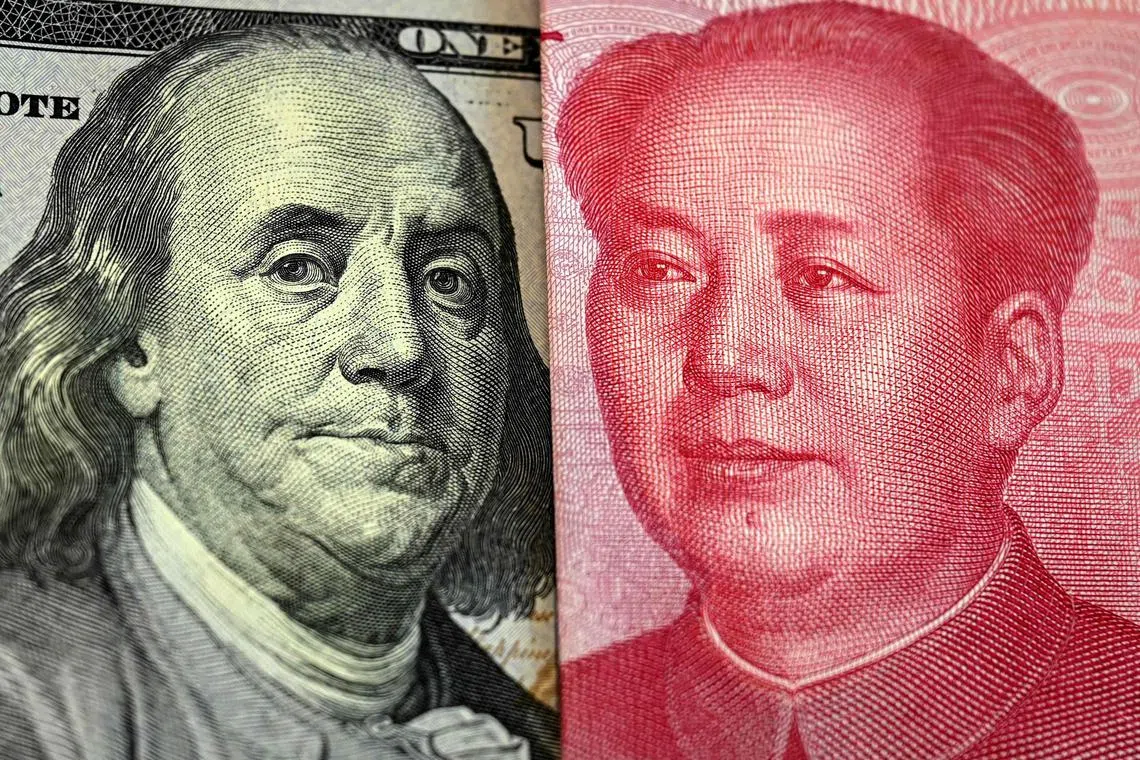Yuan dips to new lows as US tariffs on China roll out
Sign up now: Get ST's newsletters delivered to your inbox

The yuan weakened 0.2 per cent to 7.3498 per dollar in afternoon trading.
PHOTO: AFP
Follow topic:
SINGAPORE/HONG KONG – China’s yuan dipped to a fresh 19-month low against the US dollar on April 8 after its offshore counterpart fell to a record low overnight, as investors fretted about an intensifying Sino-US trade war.
The yuan weakened 0.2 per cent to 7.3498 per dollar in afternoon trading, after dipping to a low of 7.3505 per dollar earlier in the session, the lowest since September 2023.
The offshore yuan pared losses and climbed about 0.62 per cent to 7.3812 yuan per dollar in Asian trade, after sinking more than 1 per cent in the previous session and hitting its weakest level on record at 7.4288 per dollar overnight.
The declines come as a trade war between the world’s two largest economies escalates, and after China’s central bank loosened its grip on the currency in what analysts said was an attempt to counteract the blow to exports.
US President Donald Trump’s “reciprocal” tariffs on dozens of countries took effect on April 8, including substantial duties of 104 per cent on Chinese goods,
“The move in dollar-CNH overnight was definitely material and it came off the back of the fact that Trump is going to move ahead with the extra tariffs on China,” said Ms Carol Kong, a currency strategist at Commonwealth Bank of Australia.
She expects the offshore yuan to reach a low of 7.7 per dollar by the end of the third quarter, but said that level could be reached earlier “if the US and China further impose higher tariffs on each other”.
The People’s Bank of China on April 9 set the midpoint rate – around which the onshore yuan is allowed to trade in a 2 per cent band – at 7.2066 per dollar, the weakest level since Sept 11, 2023.
Based on the fixing level, the yuan is allowed to drop as far as 7.3507, a whisker stronger than the 7.3510 low struck in September 2023. Still, the fixing was 1,282 pips firmer than a Reuters estimate, suggesting the central bank is reluctant to see a drastic depreciation of the currency.
Chinese state-owned banks were busy selling dollars in the onshore spot market to slow the pace of yuan declines early on April 8 morning, according to two people familiar with the matter.
“I think the regulators and the government are trying to moderate the movement to stabilise the overall market, (which) is more important than sending some dramatic signals to the market,” said Ms Lei Zhu, head of Asian fixed income at Fidelity International in Hong Kong.
Both the onshore and offshore yuan have lost more than 1 per cent against the dollar so far in April, leaving them weaker since the start of the year, pressured by fears of the tariffs’ impact.
A weaker yuan would make exports cheaper and alleviate some pressure on China’s trade and the broader economy, but a sharp decline could fuel unwanted capital outflow pressure and risk financial stability, economists said. REUTERS

